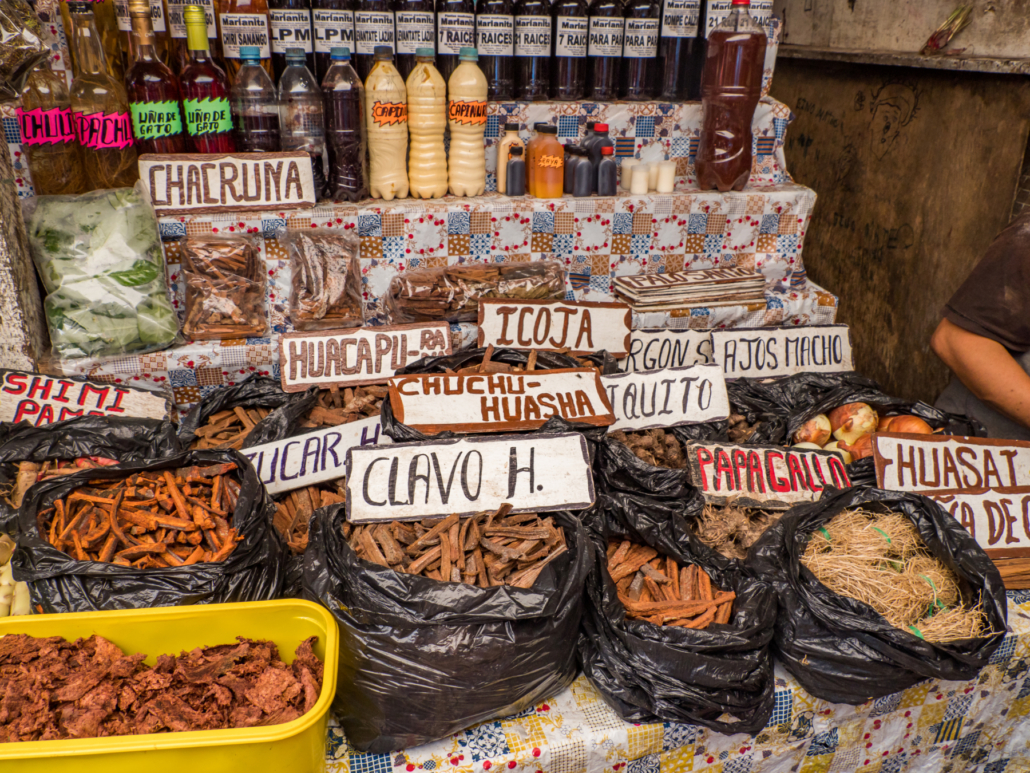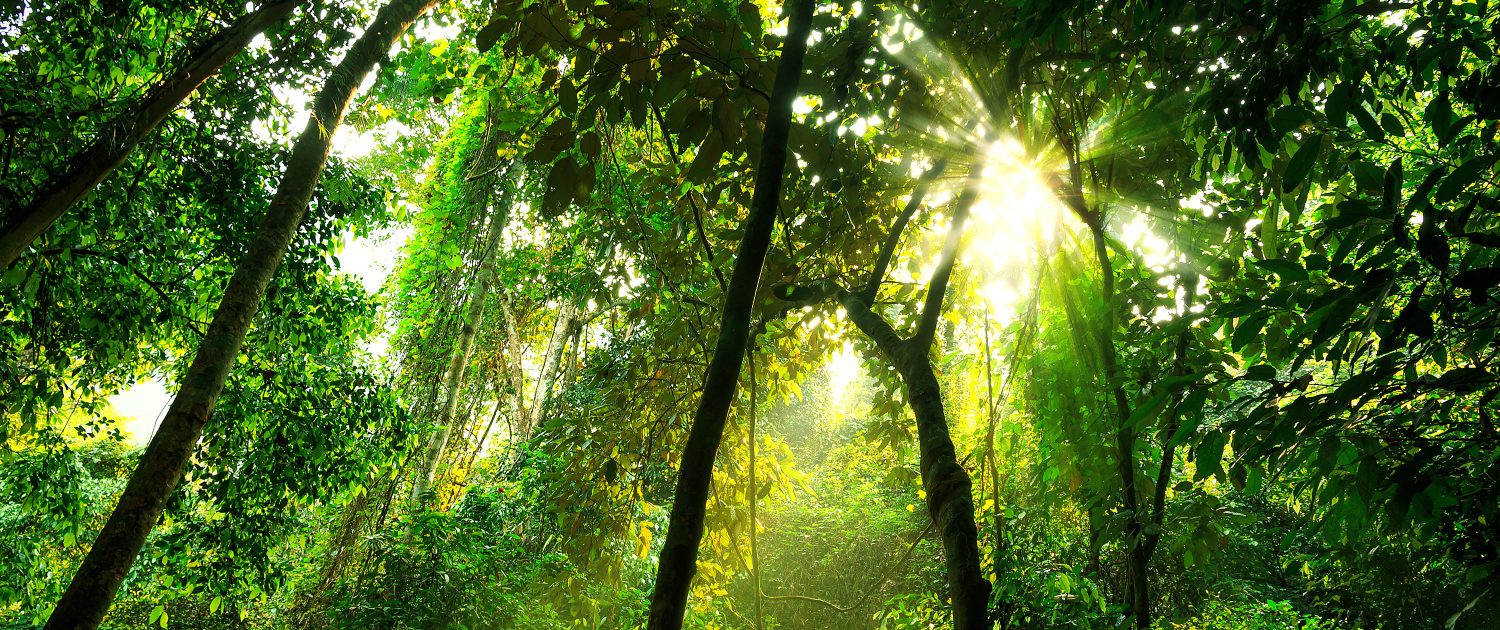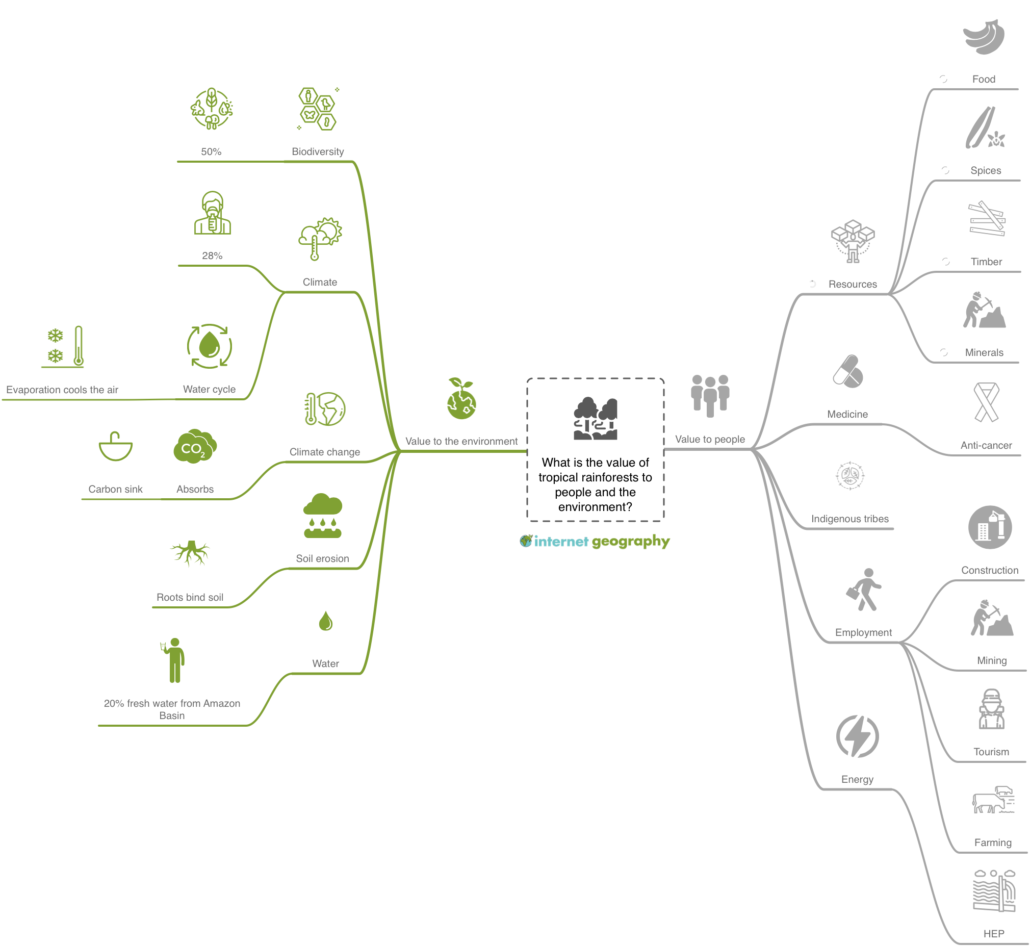What is the value of the tropical rainforest?
The tropical rainforest is a valuable provider of resources and opportunities. These fall into two groups:
- those resources and opportunities provided by the rainforest in its natural state
- those resources and opportunities provided by the land once it is cleared of rainforest cover.
The second is the driving force behind much of the current deforestation of tropical rainforests through crops and livestock farming. However, what is the value of the tropical rainforest in its natural state?
The opportunities and resources the rainforest and other biomes or ecosystems offer are widely known as goods and services. In this case, goods are things that can be directly obtained from the rainforest, and services are benefits the rainforest can offer to people and the environment. The table below shows examples of goods and services.
- Building materials (timber)
- Native food crops
- Wild meat and fish
- Energy from HEP
- Medicine
- Water
What goods are supplied by the tropical rainforest?
Many foods we eat originate from the tropical rainforest, including sugar, cocoa and bananas. Spices such as cinnamon and vanilla also come from the tropical rainforest. Rubber can be harvested from rubber trees, and rope and baskets come from the rainforest. Some perfumes, soaps, polishes and chewing gum include chemicals from rainforest leaves, flowers and seeds. Traditional subsistence farming still involves harvesting rainforest goods.
More recently, the value of rainforests has particularly increased in the search for treatments and cures for illnesses. Pharmaceutical companies are finding ingredients in rainforest plants that can be used to treat diseases. Indigenous people have traditionally used plant bark, resin, roots and leaves to treat ailments.

Various types of tree bark, roots and other medicinal specifics at the Belen bazaar (Belén market), Iquitos, Amazonia, Peru, South America.
Over 120 prescription drugs come from a plant source. Around a quarter of the drugs used in the developed world are derived from rainforest plants. Scientists have tested less than 1% of rainforest plants for their medicinal qualities. In today’s cancer-fighting drugs, 25% of the active ingredients originate from organisms only found in rainforests.
Today, over 100 pharmaceutical companies are researching possible new plant drugs and cures. There were none in 1980. It is in the interests of global health care to protect rainforests. However, wild plants must be sustainably harvested or cultivated.
What services are supplied by the tropical rainforest?
The rainforest services, such as nutrient recycling and protection from soil erosion, benefit the rainforest and its general health. Maintaining biodiversity and habitats are benefits people can enjoy as tourists or as indigenous people. However, the rainforest’s air purification system is of most value to humans and the environment, not just locally or nationally, but globally.
Climate change and global warming is perhaps the most important global issue facing us today. We will only be able to tackle climate change if we:
- reduce fossil fuel combustion, lowering emissions of carbon dioxide
- reduce the rate of deforestation and ensure there are enough trees to act as a carbon sink.
The tropical rainforest is one of the largest global carbon sinks and is critical in tackling climate change. The two things required to protect the rainforest are:
- ensuring the rainforest remains in a pristine state, including establishing national parks and nature reserves
- allowing the use of rainforest goods and services, but only in a controlled, sustainable way.
What is the value of tropical rainforests to people and the environment?
What is the value of tropical rainforests to people?
Resources
Tropical rainforests contain extensive wood reserves, fruit and nuts, and minerals such as gold, bauxite (the main constituent of aluminium), iron ore, and silver.
Everyday items such as bananas, sugar and cocoa originate from tropical rainforests and spices such as cinnamon and vanilla.
Medicine
Approximately 25% of all medicines come from plants in the rainforest. More than 2000 plants are known to have anti-cancer properties. However, less than 1% of rainforest plants have been tested for their medicinal qualities.
Indigenous tribes
Thousands of indigenous people live in harmony with the tropical rainforest; their well-being and survival depend on a balanced ecosystem. Small communities of indigenous people depend on the rainforest for food, building materials and fuel.
Energy
High rainfall levels offer the opportunity to develop hydroelectric power by constructing dams and forming reservoirs. This helps meet the growing demand for energy in many NICs/LICs that contain rainforest areas. Micro-hydro schemes can provide electricity for power and light to local communities.
Employment
Tropical rainforests offer many employment opportunities, including guides and stewards for tourism. Economic activities like mining, logging, farming and construction offer employment opportunities in the rainforest.
What is the value of tropical rainforests to the environment?
Water
Rainforests are a vital source of freshwater. Twenty per cent of the world’s fresh after comes from the Amazon Basin alone.
Biodiversity
Over fifty per cent of the world’s known plants and animals exist in tropical rainforests.
Climate
Twenty-eight per cent of the world’s oxygen is generated in tropical rainforests. At the local and regional level, moisture emitted from vegetation through transpiration contributes to the water cycle and ensures the climate does not become too hot or dry. The air in rainforests is cooled by evaporation.
Climate change
Rainforests are an important carbon sink, absorbing carbon dioxide from the atmosphere, which helps offset global warming.
Soil erosion
The roots of vegetation bind together tropical soils, and the canopy intercepts heavy rainfall reducing the risk of soil erosion, which can silt up rivers and reservoirs.
Related Topics
Use the images below to explore related GeoTopics.



